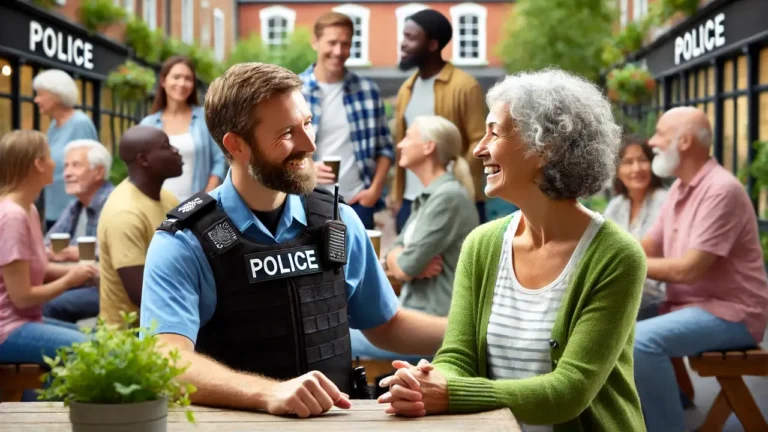Communication Barriers in Public Speaking
Public speaking is one of the most powerful ways to connect with an audience, share ideas, and inspire action. However, even the most prepared speakers can struggle if communication barriers get in the way. These obstacles can lead to misunderstandings, disengagement, and loss of credibility.
In this guide, we’ll break down the types of communication barriers in public speaking, their impact, and practical strategies to overcome them — so your message is heard clearly and confidently.
What Are Communication Barriers in Public Speaking?
Communication barriers in public speaking are factors that distort, block, or reduce the clarity of your message when addressing an audience. These barriers can be internal (like nervousness or poor preparation) or external (like noise or technical issues).
The goal of a public speaker is to minimize or remove these barriers so the audience can focus on the message rather than the distractions.
Why Do Communication Barriers Matter in Public Speaking?
Barriers to effective speaking can:
- Reduce audience engagement — listeners may lose interest or become confused.
- Weaken your credibility — unclear delivery can make you seem unprepared.
- Cause misunderstandings — important points might be misinterpreted or missed entirely.
- Limit persuasion — if your message isn’t clear, you may fail to inspire action.
A 2023 survey by the National Communication Association found that 58% of audience members stop paying attention if a speaker’s delivery is unclear or unengaging.
What Are the Main Types of Communication Barriers in Public Speaking?
1. Physical Barriers
- Examples: Poor microphone quality, bad lighting, distracting background noise.
- Impact: Audience struggles to hear or see the speaker, reducing attention span.
2. Psychological Barriers
- Examples: Stage fright, anxiety, self-doubt.
- Impact: Nervous speakers may rush, avoid eye contact, or forget key points.
3. Language and Vocabulary Barriers
- Examples: Overuse of jargon, complex words, or slang unfamiliar to the audience.
- Impact: Listeners may misunderstand or disengage.
4. Cultural Barriers
- Examples: References, humor, or gestures that don’t translate well across cultures.
- Impact: Risk of offending or alienating parts of the audience.
5. Non-Verbal Barriers
- Examples: Poor body language, lack of facial expressions, closed posture.
- Impact: Audience may interpret the speaker as disinterested or unapproachable.
6. Organizational Barriers
- Examples: Disorganized speech, unclear structure.
- Impact: Listeners struggle to follow the flow of ideas.
What is the Barrier to Speaking non Exclusively?
A barrier to speaking non-exclusively usually refers to any factor that prevents a person from including or addressing all relevant groups, perspectives, or individuals in their speech.
In communication terms, it often comes from exclusive language — words, phrases, or communication styles that unintentionally leave people out or make them feel excluded. This barrier can show up in several ways:
1. Language and Word Choice
- Using jargon, slang, or cultural references that only a certain group understands.
- Choosing words that imply one group is the “norm” and others are “different.”
2. Cultural and Social Bias
- Making assumptions about gender roles, traditions, or beliefs that don’t apply to everyone.
- Speaking from a single cultural perspective without acknowledging others.
3. Structural or Policy-Based Restrictions
- Rules or norms in an organization that discourage inclusive language or open discussion.
4. Personal Attitudes and Awareness
- A speaker may not be aware they are excluding others because they’ve never been exposed to different perspectives or feedback.
How Can You Overcome Communication Barriers in Public Speaking?
Here are practical strategies to ensure your message lands effectively:
✔ Prepare Thoroughly
Research your topic, know your audience, and rehearse multiple times. Confidence grows with preparation.
✔ Use Clear and Simple Language
Replace jargon with plain language. If technical terms are necessary, explain them in simple words.
✔ Manage Anxiety
Use deep breathing, visualization, or positive affirmations before going on stage.
✔ Engage the Audience
Ask questions, share relatable stories, or use interactive polls to keep listeners involved.
✔ Practice Strong Non-Verbal Communication
Maintain eye contact, use open gestures, and vary your tone of voice.
✔ Adapt to Feedback
Watch for signs of confusion and adjust your pace or examples on the spot.
✔ Use Technology Wisely
Test microphones, slides, and visual aids before speaking to avoid technical disruptions.
Common Barriers and Solutions
| Barrier Type | Example | Solution |
|---|---|---|
| Physical | Faulty microphone | Test equipment beforehand |
| Psychological | Nervousness | Practice relaxation techniques |
| Language | Complex jargon | Use simple, clear words |
| Cultural | Unfamiliar humor | Use universal examples |
| Non-Verbal | Avoiding eye contact | Maintain natural audience connection |
| Organizational | Unclear speech flow | Use structured outline |





